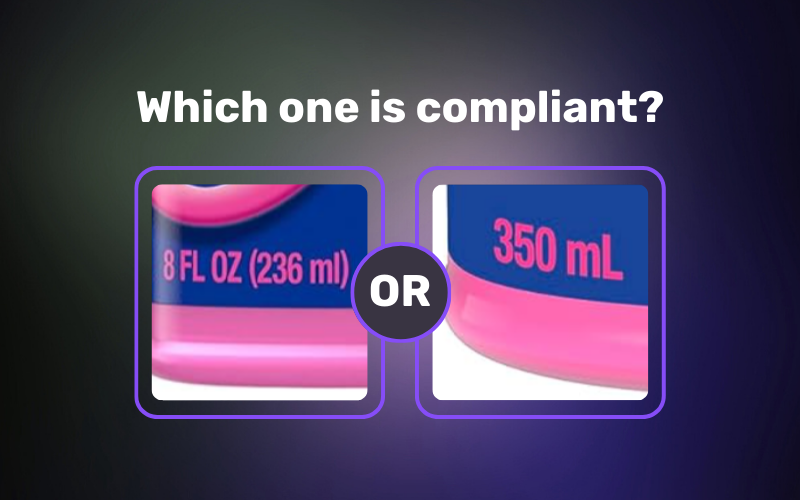4 min read

If you are a brand owner selling goods on Amazon and discover that a third-party is selling counterfeit versions of your product, one quick and often effective means for deterring this activity (in addition to reporting it to the marketplace) is to send a “cease and desist” (C&D) letter to the infringing third-party seller.
Although a cease and desist letter doesn’t have any legal effect like a court-issued restraining order, it is an inexpensive and quick way to be proactive in protecting your IP rights. You help efforts to stamp out Amazon counterfeit products. In some cases, the C&D leads to learning intelligence about the infringer, or best case, they disappear altogether. For most brand owners, compliance directors, and eCommerce channel managers, Amazon fraud reporting isn’t enough. It's not a question if C&Ds will be needed and used - but how and when.
What is Cease and Desist?
A cease and desist letter is a formal document sent to an individual or entity to demand that they stop engaging in specific actions that are unlawful or infringe on the sender's rights. The letter typically outlines the offending behavior, cites applicable laws, and warns of potential legal consequences if the recipient does not comply. While not legally binding, it serves as a warning and a precursor to possible legal action.
Strategies around this vary, primarily based on infringement type, severity, jurisdiction, and many other factors; but generally speaking, in the online brand protection space, it's been about sending large volumes of email-based letters. Certainly, highly cost-effective and sensical when dealing with very high volumes of infringement.
That said, and we feel confident this is universally accepted; email cease and desist letters don’t work as well as physical letters. Certified letters with delivery confirmation are the most effective method. Based upon analysis of hundreds of individual enforcement cases across different brands, certified letters yielded 5x the compliance rate vs. email-based letters.
Volume doesn’t equal success when it comes to creating real change through online brand protection. Given many are concerned about Amazon brand protection, the C&D letter can be used as a tactic. And, with a more strategic approach to analysis, a lower volume of high-impact letters can produce both less consumer exposure to unauthorized sellers, and drive increases in good authorized eCommerce revenue.
In addition, cease and desist letters are easy to write but there are some important steps you should follow to improve the chances of getting the results you want.
Cease and Desist Letter Template
First, while cease and desist letters do not have to follow a specific format, the letter should include the following information:
- State your name and your company name and identify yourself as the trademark and brand owner of your product. You may also add the dates you secured copyright or trademark registration for your IP.
- State the specific intellectual property being infringed or the product being counterfeited and where it is occurring, including the domain name or URL where the counterfeit goods are appearing. Take a screenshot of the counterfeit product or infringing trademark and be sure to keep this information on file. This information is also needed to file a complaint with the marketplace.
- State your request for the infringing seller party to immediately stop selling the counterfeit goods or using your trademarks or copyright images.
- Inform the infringing seller party that you intend to take legal action if they refuse to stop or if they continue.
- Demand that the infringing seller responds within a few days that they have removed the infringing content or removed the counterfeit listings from the marketplace.
How to Send a Cease and Desist Letter
You can send the cease and desist letter via email to regular mail, email, or in some cases, in-person to the seller’s personal email address on the seller’s product page. However, we recommend that you send the letter via certified mail so that you have a record of the delivery of the letter. We also recommend that you require the recipient to sign for a receipt so that you have certainty that the cease and desist letter has been received.
Some platforms like Amazon also provide a chat or message box for you to communicate with a seller once a purchase has been made. Do not use these mechanisms to send Amazon cease and desist letters or other types of enforcement notices. In the case of Amazon infringement, it's a clear violation of their terms and conditions and in all likelihood, the message will not be delivered.
With IPSecure you can automatically send certified cease and desist letters to infringing Amazon sellers with a few clicks of your mouse! Sign up free: request demo
Once your certified letter has been sent, if you do not get receipt confirmation or do not see the counterfeit products removed or the infringing content deleted, you may need to consult with legal counsel on the next steps to enforce your rights. However, the documented proof that you made legitimate attempts to resolve the issue directly with the seller, and they did, in fact, receive the letter(s) but did not take corrective action, will only bolster and harden your claims in the future should further legal action be necessary.
For more information, or to start protecting your brand on Amazon in minutes, visit ipsecure.com and sign up today!
